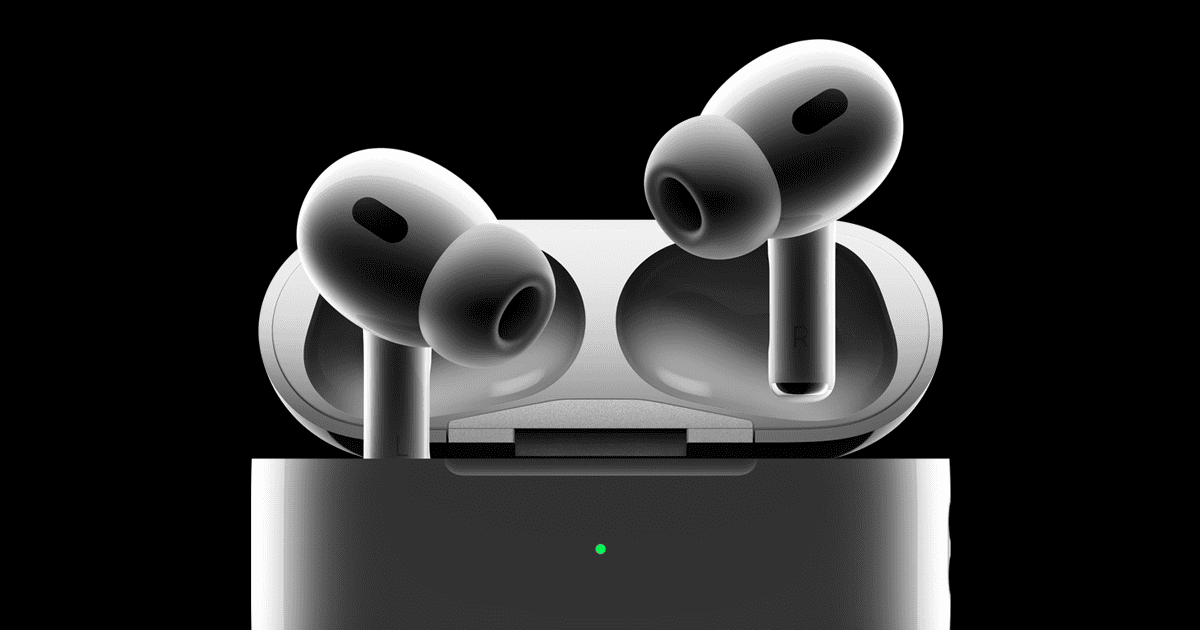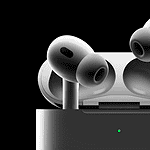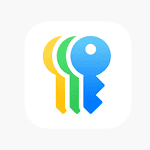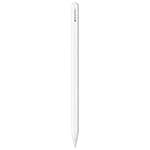Choosing between the Bose QuietComfort Earbuds II and Apple AirPods Pro 2 can be tough. Both are top contenders in the wireless earbud market, with fans on both sides. Each offers unique features that might make one better for your needs.
For noise cancellation, the Bose QuietComfort Earbuds II edge out the AirPods Pro 2, making them better for international flights and noisy environments. The Bose earbuds shine with their unbeatable noise cancellation during long flights, while the AirPods Pro 2 integrate seamlessly with Apple devices. Sound quality differs too, with Bose offering slightly deeper bass.
Battery life matters for daily use, and here the competition is close. The Bose earbuds last longer on a single charge, but both have good microphone quality for calls and meetings.
Bose vs AirPods Pro: Comparing Premium Noise-Cancelling Earbuds
When it comes to premium noise-cancelling earbuds, Bose QuietComfort Earbuds and Apple AirPods Pro are two of the most popular options on the market. Both offer excellent sound quality, effective noise cancellation, and seamless integration with their respective ecosystems. However, they differ in design, features, and performance nuances. This guide compares Bose and AirPods Pro to help you decide which earbuds best fit your needs.
Design and Comfort
- Bose QuietComfort Earbuds:
Known for their slightly larger size and more pronounced ear tips, Bose earbuds provide a secure fit with multiple ear tip sizes and stability bands. They tend to be a bit bulkier but offer excellent passive noise isolation. - Apple AirPods Pro:
Smaller and lighter with a more minimalist design, AirPods Pro feature soft silicone tips and a vent system to equalize pressure. They are very comfortable for long-term wear and have a more discreet look.
Noise Cancellation
- Bose QuietComfort Earbuds:
Bose is renowned for industry-leading active noise cancellation (ANC). Their earbuds excel at blocking low-frequency noises like airplane engines and traffic, providing a very immersive experience. - Apple AirPods Pro:
AirPods Pro also offer effective ANC with adaptive transparency mode that lets you hear the environment when needed. While their noise cancellation is excellent, many reviews find Bose’s ANC slightly more powerful, especially in noisy environments.
Sound Quality
- Bose QuietComfort Earbuds:
Bose delivers rich, balanced sound with strong bass and clear mids and highs. The sound profile is slightly warmer and fuller, appealing to listeners who prefer a more immersive soundstage. - Apple AirPods Pro:
AirPods Pro offer a clean, crisp sound with good bass and detailed highs. They also support spatial audio with dynamic head tracking for a theater-like experience on supported Apple devices.
Features and Connectivity
- Bose QuietComfort Earbuds:
- Customizable ANC levels via Bose Music app
- Transparency mode
- IPX4 water resistance
- Touch controls on earbuds
- Bluetooth 5.1
- Compatible with both iOS and Android
- Apple AirPods Pro:
- Seamless pairing with Apple devices via H1 chip
- Spatial audio with dynamic head tracking
- Adaptive Transparency mode
- IPX4 water resistance
- Force sensor controls
- Bluetooth 5.0
- Best experience within Apple ecosystem
Battery Life
- Bose QuietComfort Earbuds:
- Up to 6 hours on a single charge
- Additional 12 hours with charging case
- Fast charging: 15 minutes for 2 hours of playback
- Apple AirPods Pro:
- Up to 4.5 hours on a single charge (with ANC on)
- More than 24 hours with charging case
- Fast charging: 5 minutes for about 1 hour of playback
Price
- Bose QuietComfort Earbuds: Typically priced around $250-$280.
- Apple AirPods Pro: Typically priced around $249-$279.
Summary Table: Bose QuietComfort Earbuds vs Apple AirPods Pro
| Feature | Bose QuietComfort Earbuds | Apple AirPods Pro |
|---|---|---|
| Design | Larger, with stability bands | Compact, lightweight, vent system |
| Noise Cancellation (ANC) | Industry-leading, excels in low frequencies | Excellent, adaptive transparency mode |
| Sound Quality | Rich, warm, immersive sound | Crisp, balanced, spatial audio support |
| Controls | Touch controls | Force sensor controls |
| Battery Life (Earbuds) | Up to 6 hours | Up to 4.5 hours (ANC on) |
| Battery Life (With Case) | Up to 18 hours | Over 24 hours |
| Water Resistance | IPX4 | IPX4 |
| Connectivity | Bluetooth 5.1, iOS & Android | Bluetooth 5.0, best with Apple devices |
| Ecosystem Integration | Broad compatibility | Seamless with Apple ecosystem |
| Price Range | $250-$280 | $249-$279 |
Conclusion
Both Bose QuietComfort Earbuds and Apple AirPods Pro are excellent choices for premium noise-cancelling earbuds. If you prioritize best-in-class noise cancellation and richer sound, Bose QuietComfort Earbuds are a top pick. If you want seamless integration with Apple devices, spatial audio, and a more compact design, AirPods Pro are the way to go.
Your choice depends on your preferred ecosystem, usage habits, and which features matter most to you.
Key Takeaways
- Bose QuietComfort Earbuds II offer superior noise cancellation for travelers and commuters.
- AirPods Pro 2 provide better integration with iPhone and other Apple devices.
- Both earbuds have good sound quality, but Bose delivers deeper bass while AirPods offer convenience.
Design and Build Quality
Both Bose and Apple have distinct approaches to earbuds design. Their differences in materials, comfort, and case design directly impact the user experience and durability.
Materials and Durability
Bose QuietComfort earbuds feature a solid plastic construction with a premium matte finish that resists fingerprints. They come with stability bands that help keep them secure in your ears during movement. These earbuds are built to last with sturdy components.
The AirPods Pro 2 use a glossy white plastic that has become Apple’s signature look. While attractive, this surface shows scratches more easily than Bose’s matte finish. Apple’s stems provide an easy way to handle the earbuds without touching the ear tips.
Both earbuds offer water resistance. The AirPods Pro 2 have an edge with dust resistance in addition to water resistance, while Bose offers only water protection. This makes Apple’s option better for outdoor activities in various conditions.
Comfort and Fit
Bose excels in comfort with their earbuds designed to create an instant, snug fit. Users report that Bose earbuds fit easily and create a better seal compared to the AirPods Pro 2. The stability bands help distribute pressure, making them comfortable for extended wear.
Apple’s AirPods Pro 2 feature a lightweight design that many users find comfortable. They include multiple ear tip sizes to help achieve a good fit. However, some users find they don’t create as tight a seal as the Bose earbuds.
For active users, Bose tends to stay in place better during workouts and running. The superior seal also enhances noise cancellation performance by physically blocking more outside noise.
Case Design and Portability
Apple’s charging case for the AirPods Pro 2 is notably smaller and more pocket-friendly. It features a glossy finish matching the earbuds and includes a built-in speaker for Find My alerts. The case has a lanyard loop for easy carrying.
Bose’s case is larger but still portable. It features a matte finish that resists fingerprints better than Apple’s glossy case. The case opens with a button press rather than a lid, which some users find more convenient.
Both cases offer wireless charging capabilities. Apple’s case now includes U1 chip technology for precise location tracking. The battery life and portability of Apple’s case gives it a slight edge for travelers and commuters who need to recharge on the go.
Technical Features and Performance
Both the Bose QuietComfort earbuds and Apple AirPods Pro 2 offer impressive technical capabilities that set them apart from other wireless earbuds. Their performance differences become apparent when examining their sound profiles, noise cancellation effectiveness, and connection stability.
Sound Quality and Audio Tech
The Bose QuietComfort earbuds deliver rich, balanced audio with strong bass response. Many users find the sound quality particularly impressive with deep, clear lows that don’t overpower the mids and highs.
Apple’s AirPods Pro 2 excel with Spatial Audio with dynamic head tracking. This feature creates an immersive listening experience that simulates surround sound. When watching Dolby Atmos content, the AirPods Pro 2 place sounds precisely around the listener.
Both models support customizable EQ settings through their respective apps. The Bose app offers more granular sound adjustments, while Apple’s approach is more streamlined.
Sound signature differences are noticeable – Bose tends toward warmth and richness, while Apple offers a more neutral profile with slightly enhanced highs for clarity in vocals and spoken content.
Active Noise Cancellation and Transparency
Bose has long been the leader in noise cancellation technology, and the QuietComfort earbuds continue this tradition. They offer the best low-frequency noise cancellation available, effectively blocking airplane rumble, traffic noise, and air conditioners.
The AirPods Pro 2 have significantly improved their ANC compared to the first generation. They use adaptive algorithms that continuously adjust to your environment. However, in direct comparisons, most users find Bose’s noise cancellation slightly more effective.
Both models feature excellent transparency modes. Apple’s “Adaptive Transparency” can automatically reduce sudden loud noises while still letting you hear your surroundings. Bose’s transparency mode sounds more natural to many users.
User comfort during long ANC sessions favors Bose due to their superior seal quality and fit, which enhances both comfort and noise isolation.
Connectivity and Bluetooth Technology
AirPods Pro 2 feature seamless integration with Apple devices through the H2 chip. This enables instant pairing, automatic switching between devices, and “Find My” location tracking.
Bose QuietComfort earbuds use Bluetooth 5.3 technology, offering stable connections and good range. Unlike the AirPods, they support Bluetooth multipoint, allowing simultaneous connection to two devices.
Battery life is comparable between models. The AirPods Pro 2 provide up to 6 hours of listening with ANC enabled, while Bose offers around 6-7 hours. Both cases provide multiple additional charges.
Fast charging capabilities exist in both models. The AirPods Pro can gain about 60 minutes of playback from just 5 minutes of charging, while Bose offers similar quick charge performance.
Connection stability tends to be better with the AirPods when used with Apple devices, but Bose provides more consistent performance across both Android and iOS platforms.
Battery Life and Charging
Battery performance and charging features play a crucial role when choosing between Bose and AirPods Pro earbuds. These aspects directly impact day-to-day usability and convenience for users on the go.
Battery Performance Comparisons
The Bose QuietComfort Ultra Earbuds and Apple AirPods Pro 2 show notable differences in battery endurance. The AirPods Pro 2 offer approximately six hours of listening time with active noise cancellation (ANC) enabled. This matches typical daily usage needs for most commuters.
The newer Bose QuietComfort Earbuds (2024 model) push ahead with 8.5 hours of playback on a single charge. This represents a significant improvement over earlier models and exceeds what Apple currently offers.
Battery performance can vary based on volume levels and features used. Testing shows both brands deliver consistent performance, though Bose typically maintains better battery life when using noise cancellation features extensively.
For long-haul travelers, this difference might tip the scales toward Bose. However, most users will find either option sufficient for daily use.
Charging Case Capabilities
The charging cases for both brands extend listening time considerably. Apple’s case provides an additional 24 hours of battery life for the AirPods Pro 2, allowing for multiple recharges throughout the day.
Bose’s case for the QuietComfort Earbuds (2024) holds 2.5 additional charges. This translates to roughly 21 hours of extra listening time beyond the earbuds’ initial charge.
Fast charging capabilities exist in both models. A quick 15-minute charge typically provides 1-2 hours of listening time for emergency situations when you’re running low on battery.
The AirPods Pro 2 case is notably smaller and more pocket-friendly. This makes it slightly more convenient for everyday carry, despite the Bose offering potentially longer overall battery life.
Wireless Charging and Power Management
Both earbud systems support wireless charging, adding convenience to the recharging process. Simply place the case on a Qi-compatible charging pad, and you’re good to go—no cables needed.
Apple integrated a speaker into the AirPods Pro 2 case that helps with Find My functionality. This feature does consume additional power but proves helpful for locating misplaced earbuds.
Bose prioritizes power efficiency in their QuietComfort Ultra Earbuds, with power management systems that help preserve battery during periods of inactivity. Their automatic off feature helps prevent unnecessary battery drain when not in use.
Both brands offer battery status indicators through their companion apps. Apple’s solution integrates more seamlessly with iOS devices, showing pop-up battery status indicators when opening the case near an iPhone.
USB-C charging is available on both models, aligning with current charging standards and enabling compatibility with many modern charging accessories.
Software Integration and Apps
Both Bose and Apple have created companion apps that enhance their earbuds’ functionality through customization options and seamless updates. The software experience plays a huge role in daily usability and getting the most from these premium audio devices.
Native App Features and Customizations
The Bose Music app offers extensive control over the QuietComfort earbuds. Users can adjust EQ settings with a customizable equalizer to fine-tune audio to their preferences. The app also provides different levels of noise cancellation and lets users create and save specific “modes” for different environments.
Apple’s approach focuses on simplicity and integration. The AirPods Pro 2 settings appear directly in the iPhone’s Bluetooth menu – no separate app download required. Users can take a hearing test to create a personalized audio profile. The AirPods Pro also offer adaptive transparency mode that automatically reduces loud environmental noises.
Both apps allow users to rename their earbuds and locate them when misplaced. The Bose app gives more manual control, while Apple’s solution emphasizes automatic adjustments based on user context.
Firmware Update Process
Updating AirPods Pro 2 happens almost invisibly in the background when connected to an iPhone. Users rarely need to manually trigger updates, as they install automatically when the earbuds are charging and near the paired device. This hands-off approach means less user intervention but also less control.
The Bose firmware update process requires more active participation. Updates arrive through the Bose Music app, where users must manually check and install them. While this takes more effort, it gives users control over when updates happen and ensures they’re aware of new features.
Both brands regularly release firmware updates that improve performance and add features. Bose typically provides detailed release notes about what each update includes, while Apple’s notes tend to be more general.
Ecosystem Integration
Apple’s major advantage lies in its seamless ecosystem integration. AirPods Pro 2 can instantly switch between Apple devices sharing the same Apple ID. They support spatial audio with dynamic head tracking, automatic reading of notifications, and hands-free Siri access.
The Find My network helps locate lost AirPods even when they’re not connected to a device. Apple Watch users can control ANC settings directly from their wrist.
Bose takes a more platform-agnostic approach. The QuietComfort earbuds work equally well with Android and iOS devices. While they lack the deep integration with any single ecosystem, they offer consistent performance regardless of which device users own.
Multi-point connectivity lets Bose earbuds connect to two devices simultaneously, a feature AirPods Pro 2 achieve only within the Apple ecosystem.
Product Experience and User Feedback
Real-world performance and user satisfaction reveal significant differences between Bose and AirPods Pro earbuds. Both have strengths that appeal to different types of users depending on their priorities.
Ease of Use and Accessibility
Bose QuietComfort earbuds offer intuitive touch controls that respond well to taps and swipes. Users can customize these controls through the Bose Music app. The earbuds pair quickly with most devices but lack the seamless device switching that Apple provides.
AirPods Pro 2 shine in the Apple ecosystem with one-tap setup and automatic switching between Apple devices. The stem-squeeze control method takes some getting used to but prevents accidental touches. Many users find this approach more reliable than touch-sensitive surfaces.
Battery life differs between the models. Bose earbuds typically last longer on a single charge, making them better for long flights. AirPods Pro offer quicker charging but may need to be topped up during extended use.
Both options include wireless charging cases, though AirPods Pro 2 adds Apple Watch charger compatibility and a built-in speaker for Find My alerts.
Call Quality and Microphone Performance
Call quality tests show both earbuds perform well in quiet environments. Bose earbuds use a multi-microphone array that captures clear voice audio in most conditions. The system works hard to reduce background noise, though wind can still cause issues.
AirPods Pro 2 feature improved microphones over the first generation. They handle wind noise better than most competitors. The inward-facing microphone helps with voice isolation, making calls clearer even in noisy settings.
For voice assistants, AirPods Pro integrate naturally with Siri, while Bose works with multiple assistants but lacks the same deep integration. This affects how easily users can make calls or send messages hands-free.
Both options support automatic switching between noise cancellation modes during calls, prioritizing voice clarity.
Customer Reviews and Satisfaction
User reviews consistently praise Bose for superior comfort during extended wear. The silicone ear tips and overall design distribute pressure evenly. Many users report they can wear Bose earbuds for hours without discomfort.
AirPods Pro 2 receive high marks for their ecosystem integration. Apple users appreciate features like spatial audio with head tracking and seamless switching between devices. The lightweight design appeals to those who find other earbuds too bulky.
Regarding ANC performance, Bose consistently earns top ratings. The noise cancellation is unbeatable for flights according to frequent travelers. AirPods Pro 2 have improved significantly but still fall slightly behind Bose in blocking low-frequency noise.
Durability concerns appear in reviews for both products. AirPods Pro 2 have an edge with IP54 dust resistance, while Bose lacks a dust rating.
Marketing and Pricing Strategies
Both Bose and Apple employ distinct approaches to market their premium earbuds, with each brand leveraging different strengths to attract customers and justify their high-end pricing.
Price Comparison and Value Proposition
The Apple AirPods Pro 2 are typically about $50 cheaper than the Bose QuietComfort Ultra Earbuds. Apple positions its earbuds as a premium yet accessible option within their ecosystem.
When on sale, both products can sometimes be found for the same price. During promotions, consumers can get both models for $199, representing excellent value.
Bose justifies its higher price point through superior noise cancellation technology. Their value proposition centers on providing the absolute best noise cancellation in the market.
Apple’s value proposition links to its ecosystem integration, making the AirPods Pro 2 more attractive to current Apple device owners.
Targeted Advertising and Promotions
Bose targets audiophiles and frequent travelers in their marketing campaigns. Their ads highlight noise cancellation performance, showing people in loud environments enjoying music or silence.
Apple focuses on lifestyle integration and convenience in their advertising. Their commercials often show AirPods Pro 2 being used seamlessly with other Apple products.
Both brands use social media influencers and tech reviewers to reach their target audiences. These partnerships help build credibility with potential customers.
Seasonal promotions are common for both products, with significant price drops during Black Friday and holiday seasons. Apple often includes AirPods Pro 2 in back-to-school bundles with MacBooks or iPads.
Brand Positioning and Consumer Perception
Bose positions itself as an audio engineering leader with superior technology. Consumers generally perceive Bose as a specialist brand focused on sound quality and noise cancellation.
Tests show Bose QuietComfort earbuds reduce noise by an impressive margin, reinforcing their premium positioning.
Apple positions AirPods Pro as fashion accessories as much as tech products. The distinctive white design has become a status symbol among many consumers.
The seamless pairing experience with other Apple devices creates strong brand loyalty. Many customers report choosing AirPods Pro 2 primarily because they already own iPhones or Macs.
Some creative users even combine both products, wearing Bose headphones over AirPods Pro for maximum noise reduction during flights.
Privacy and Data Handling
Both Bose and Apple collect user data when you use their wireless earbuds. Each company handles this information differently, with varying approaches to cookies, data collection, and consumer protection.
Cookie Usage and Web Experience
When you visit the Bose and Apple websites, different types of cookies are used to enhance your browsing experience.
Types of cookies used by both companies:
- Strictly necessary cookies: Enable basic website functions
- Performance cookies: Track site usage and page visits
- Functional cookies: Remember your preferences
- Targeting cookies: Deliver personalized ads
Both companies allow users to adjust cookie settings in their browsers. You can typically opt out of performance and targeting cookies while keeping the strictly necessary ones.
Apple tends to be more transparent about cookie usage with clear opt-out options. Bose’s cookie policy is comprehensive but sometimes requires more steps to change settings.
Data Collection and Traffic Sources
Both Bose and Apple collect personal data when you use their earbuds and companion apps. This includes:
Data collected by both companies:
- Location information (when permitted)
- Usage patterns
- Device information
- App interactions
Apple’s AirPods Pro integration with iOS means more seamless data collection within their ecosystem. The Health app may store hearing data if you use AirPods Pro for hearing assistance features.
Bose QuietComfort earbuds collect data through the Bose Music app. They track how you use noise cancellation features and EQ settings to improve product performance.
Neither company sells your personal information to third parties, according to their policies. However, anonymized and aggregated data might be shared for marketing analytics.
Consumer Data Protection Policies
Apple has built its brand partly on strong privacy protections. Their approach includes:
- End-to-end encryption for sensitive data
- On-device processing when possible
- Clear privacy labels on App Store
- Regular privacy policy updates
Bose has improved its data protection practices in recent years. Their current approach includes:
- Detailed privacy notices
- Options to limit data sharing
- Account deletion capabilities
- Data retention limitations
Both companies comply with regulations like GDPR in Europe and CCPA in California. Users have rights to access, correct, and delete personal information.
Apple typically receives higher ratings from privacy advocates. However, Bose has made significant strides in transparency about what data they collect and how they use it.
Frequently Asked Questions
Choosing between Bose QuietComfort Earbuds and Apple AirPods Pro involves comparing several key features that impact daily use. Each brand offers unique benefits across sound quality, noise cancellation, battery life, comfort, and compatibility.
What are the differences in sound quality between Bose QuietComfort Earbuds and the AirPods Pro?
Bose QuietComfort Earbuds tend to offer slightly better sound quality compared to AirPods Pro. They produce richer bass and more detailed audio across various music genres.
The sound profile of Bose earbuds is often described as more balanced and natural. Many audio enthusiasts prefer their warmer sound signature.
AirPods Pro still deliver excellent audio quality with a clean, crisp sound. They feature Adaptive EQ that automatically tunes music based on ear shape.
How do the noise cancellation features of Bose earbuds compare to those of the AirPods Pro?
Bose has historically led in noise cancellation technology. The QuietComfort Earbuds reduce noise by a slightly higher percentage than AirPods Pro in most testing scenarios.
The Bose model excels at blocking low-frequency sounds like airplane engines and bus rumbles. Their noise cancellation feels more immersive in loud environments.
Apple’s AirPods Pro 2 has significantly improved noise cancellation compared to earlier models. Testing shows they reduce noise by approximately 83%, making them very competitive with Bose.
What are the battery life and charging comparisons between the Bose earbuds and AirPods Pro?
Battery life is comparable between both models, with each offering around 6 hours of listening time with noise cancellation active. The charging cases extend total usage time to about 24 hours.
Bose earbuds offer quick charging, while AirPods Pro provide about 60 minutes of playback from just 5 minutes of charging. This fast-charge feature is helpful during busy days.
AirPods Pro case supports wireless charging with MagSafe, Qi chargers, or Apple Watch chargers. Bose QuietComfort case also supports wireless charging but lacks magnetic alignment.
How does the comfort and fit of the Bose QuietComfort Earbuds measure up against the AirPods Pro?
Bose QuietComfort Earbuds are slightly larger but feature soft silicone ear tips and stability bands that create a secure, comfortable fit. Many users report they stay in place better during workouts.
The AirPods Pro have a lighter, smaller design that many find less noticeable during extended wear. They come with multiple tip sizes to accommodate different ear shapes.
Bose earbuds tend to create a better seal in the ear canal, which enhances both comfort and noise isolation. However, their larger size makes them less discreet.
In terms of compatibility and connectivity, which is more user-friendly with Apple products: Bose or AirPods Pro?
AirPods Pro integrate seamlessly with Apple’s ecosystem. They offer instant pairing, automatic switching between Apple devices, and “Hey Siri” voice activation.
The AirPods Pro support spatial audio with dynamic head tracking when used with compatible Apple devices. This creates an immersive surround sound experience.
Bose QuietComfort Earbuds work with both iOS and Android devices. They use standard Bluetooth connectivity and pair easily, but lack the deep integration with Apple’s ecosystem that AirPods Pro offer.
Are there any significant differences in the technical specifications between Bose earbuds and AirPods Pro?
AirPods Pro feature Apple’s H2 chip, which improves processing power and efficiency. This enables advanced features like Adaptive Transparency mode that reduces loud environmental noises.
Bose earbuds typically have larger drivers that help deliver their signature sound quality. The technical design focuses on maximizing audio performance and noise cancellation.
The AirPods Pro case is notably smaller and more pocket-friendly than the Bose case. This makes AirPods more convenient for carrying around throughout the day.







